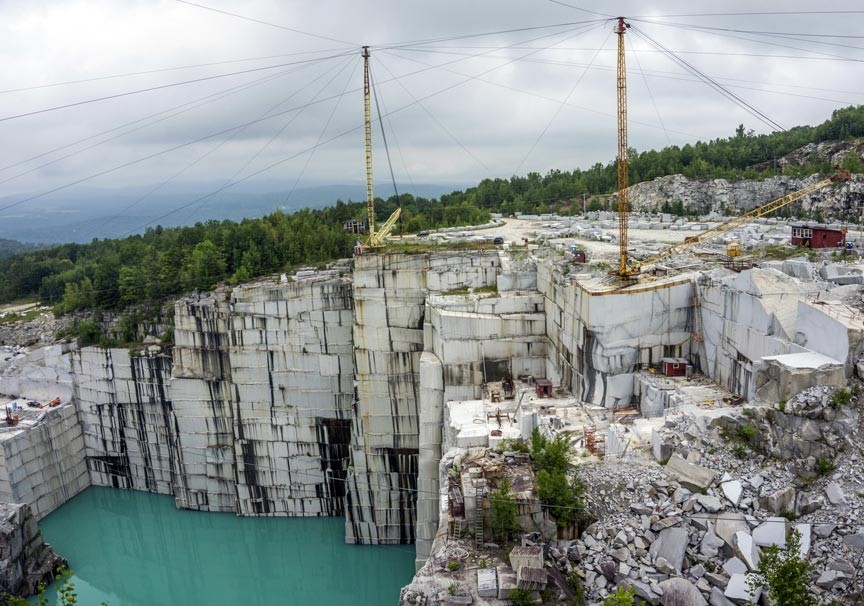The Covert Treasures: Exploring Granite Quarries in South Africa
The Covert Treasures: Exploring Granite Quarries in South Africa
Blog Article
Unveiling the Mysteries of Granite Quarrying: Where Stamina and Beauty Meet
The globe of granite quarrying is a world where the raw strength of nature merges with human virtuosity to develop frameworks that stand the examination of time with an air of style. From the depths of quarries to the meticulous sprucing up in workshops, the procedure of changing granite into architectural marvels is a complex dance of practice and development. As we peer into the depths of this ancient craft, we begin to reveal the surprise details that shape the really essence of our built environment.
The Origins of Granite Quarrying
In the annals of architectural background, the beginnings of granite quarrying are shrouded in a tapestry of ancient workmanship and geological marvels. Dating back to old Egypt and Mesopotamia, the removal of granite from quarries noted the start of a trip that would eventually bring about the development of a few of the world's most famous structures.
Granite quarrying's roots can be mapped to the knowledgeable craftsmens who acknowledged the stone's durability and aesthetic charm. With a mix of primitive tools and large resolution, these very early quarry employees unearthed granite blocks that would certainly end up being the building blocks of civilizations.
As civilizations evolved, so did the methods of quarrying granite. The Romans, renowned for their engineering prowess, developed innovative methods for extracting granite to create monoliths, holy places, and roadways that stood the examination of time.
The tradition of these old quarrying practices continues to form modern-day style, with granite continuing to be a symbol of toughness and beauty in construction tasks around the world. (granite quarries in south africa)
Tools of the Quarrying Profession
The development of granite quarrying methods from old civilizations to modern-day times highlights the crucial function played by the tools of the quarrying sell forming the industry's practices. In ancient times, quarrying tools were basic, often being composed of chisels, hammers, and wedges made from materials like bronze or iron. These tools required considerable workforce and time to extract granite blocks from quarries.

Additionally, the introduction of pneumatic tools and high-powered equipment has substantially minimized the physical labor called for in quarrying operations, enhancing worker safety and productivity. As the quarrying sector remains to introduce, the devices of the profession remain at the leading edge of driving progression and shaping the future of granite removal.
Extracting Blocks of Granite
Utilizing accuracy machinery and progressed techniques, the removal of granite blocks from quarries has ended up being an advanced procedure in the modern-day quarrying market. The preliminary action entails recognizing the location and size of the granite down payment to establish the most effective extraction technique. When an appropriate website is selected, the removal process begins with the drilling of openings for the placement of dynamites. Regulated blowing up techniques are then employed to break apart the granite right into workable sections.

Sprucing Up and Ending Up Strategies
To achieve a remarkable surface area on granite blocks, competent artisans employ a series of thorough polishing and completing methods. After the preliminary extraction and shaping processes, the granite blocks undergo a complete sprucing up phase to enhance their all-natural beauty and longevity. One usual method used in brightening granite is diamond abrasion, where industrial rubies are utilized to grind and polish the rock to a smooth surface. This procedure not only creates visite site a lustrous surface area yet additionally ensures uniformity in shade and texture throughout the granite block.
In enhancement to sprucing up, completing methods are used to further fine-tune the granite's look. By very carefully picking and applying these polishing and completing strategies, craftsmens can change raw granite obstructs into exquisite items that display both toughness and beauty.

Environmental Impact and Sustainability
With the expanding focus on ecological awareness in the sector, granite quarrying practices are progressively inspected for their effect on all-natural resources and long-term sustainability. Quarrying for granite can have substantial environmental effects. The extraction procedure commonly involves the usage of heavy equipment, dynamites, and large amounts of water, leading to environment devastation, soil disintegration, and water air pollution. Furthermore, the transportation of granite from quarries to refining facilities produces carbon emissions, better adding to ecological deterioration. granite quarries in south africa.
To minimize these impacts and guarantee sustainability in granite discover here quarrying, industry stakeholders are embracing different actions. Implementing advanced innovations to minimize energy usage and water use, redeeming quarried land for ecological restoration, and advertising liable sourcing methods are some approaches being used. Qualifications such as the Woodland Stewardship Council (FSC) and the Management in Power and Environmental Style (LEED) assistance consumers identify environmentally pleasant granite products.
Conclusion
To conclude, granite quarrying is a procedure that needs specialized devices and techniques to remove blocks of granite and polish them to a high level of surface. While the environmental effect of quarrying can be significant, efforts are being made to enhance sustainability techniques in the sector. Overall, granite quarrying is a delicate equilibrium in between harnessing the stamina and elegance of this all-natural rock while decreasing its influence on the environment.
Report this page